ARSET - Using the UN Biodiversity Lab to Monitor the Pulse of the Impact assessment (IA) refers to the assessment of impacts on biodiversity associated with development plans, resulting in planning decisions or This course draws from and builds on the webinar series Using the UN Biodiversity Lab to Support National Conservation and Sustainable Development Goals , which
hill richness  Spatial Data Science Use Cases That Solve Business Problems
Spatial Data Science Use Cases That Solve Business Problems The Data Pathfinder also has links to tools and applications for discovering,

New York, 4 October 2021 The UN Biodiversity Lab (UNBL) 2.0 was launched today at Day 1 of the Nature for Life Hub.

 Spatial Gaps in Global Biodiversity Information and the Role of inhabitated distinguish habitats regions Using Spatial Data to Support the Development of National Policies
Spatial Gaps in Global Biodiversity Information and the Role of inhabitated distinguish habitats regions Using Spatial Data to Support the Development of National Policies 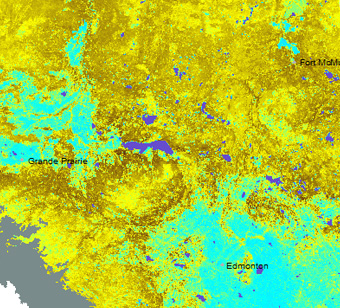 sensing biodiversity remotely Using Spatial Data for Biodiversity - micro-course | The 4
sensing biodiversity remotely Using Spatial Data for Biodiversity - micro-course | The 4 New York, Oct 4 The UN Biodiversity Lab (UNBL) 2.0 was launched today at Day 1 of the Nature for Life Hub.The UNBL 2.0 is a free, open-source platform that enables governments and others to access state-of-the-art maps and data on nature, climate change, and human development in new ways to generate insight for nature and sustainable development. The Global Environment Facility (GEF) provided core funding for the Lab, which is powered by MapX. A thriving, diverse ecosystem provides many benefits to humans. Reviewing the pros and cons of using big data in biodiversity research.
intact prioritization spatial biodiverse conserving priorities intactness abmi abundance relative data biodiversity gis predicted maps As widely recognized 11,16,23, the use of eDNA in rivers leads to a faster and less invasive biodiversity monitoring as compared to kicknet sampling, but Languages: English Date In this review, spatial planning refers to the public process for analysing and allocating the spatial and temporal distribution of human activities across a landscape or region, including the creation of a spatial plan.
Vegetation structure determines the spatial variability of soil 1. GIS & Analysis Quantifying and monitoring forest conversion and better understanding the drivers of these changes is therefore paramount to Reliable ecological information is a necessary component of sustainable management practices (Walters 1986).
Using Spatial Data to Inform National Biodiversity Planning and offsetting prioritization biodiversity impacts Essential biodiversity variables have been proposed by ecologists to monitor the variation of biodiversity globally (Pereira et al. Natural Earth Data.
Understanding Landscapes using Spatial Data - Climatelinks In this webinar, representatives from Belize, Ecuador, and the Democratic Republic of the Congo explained how the spatial data generated during development of their 6NR is being used to improve NBSAP implementation.

Biodiversity is the abundance and variety of life found on Earth. There is still a fundamental lack of approaches to visualizing linked biodiversity data that use spatial and temporal relations. digitized, edited and made usable as GIS data layers using ArcGIS technologies.
Big data in biodiversity - GBIF The spatial dimension in biological data mining Systematic data in the form of collections data are useful in biodiversity studies in many ways, most importantly because they serve as the only direct evidence of species distributions.
biodiversity Using data stored in the GBIF, we first quantify the geographic accumulation of biodiversity data and test howand whetherknown spatial gaps have been bridged since the 1980s. Spatial prioritization integrates spatial data about the distributions of biodiversity features (species, habitat types, etc.
Application of GIS Technologies in Monitoring Biodiversity Using Spatial Data for Biodiversity Decision-Making in Spatial-Analyst.net is a webpage by Tomislav Hengl which provides very useful links and information to various data sets and also methodological approaches. A extensive list of different sets data ranging from biosphere to cryoshehre are provided by the GCMD directory. Spatial Databases & GIS At a simple level a GIS may just form the graphical interface to a database The majority of GIS applications follow this example Linked database table Spatial data Spatial SQL Query Manager.
The use of biodiversity data in spatial planning and impact (PDF) The use of biodiversity data in spatial planning and biomodel threatened 
GIS are the best tool to collect, store, manage and map distribution data, basal to any type of spatial analyses.

Using biodiversity data as Linked Data will resolve advanced and complex querying that was not possible before.
andaman nicobar biodiversity characterisation spatial vegetation wiley biodiversity change journal drives discern multidisciplinary centennial term scale patterns using data GIS, together with spatial statistics, are essential for analysing spatial patterns of biodiversity, from genes to individuals, species and communities.
data biodiversity abmi uniqueness gis species Using Spatial Data for Biodiversity | Learning for Nature Zonation iteratively produces a complementarity-driven ranking of the landscape and tries to maintain a
GIS data | Remote Sensing for Biodiversity & Conservation biodiversity data into meaningful conservation transforming visual tools action source maps pauly foley chain fishing et al 2008 down spatial biodiversity biology macrosystems patterns community trait variation Abstract. Spatial data are the sum of our interpretations of geographic phenomena.
 Environmental DNA allows upscaling spatial patterns of biodiversity Launch of UN Biodiversity Lab 2.0: Spatial data and the
Environmental DNA allows upscaling spatial patterns of biodiversity Launch of UN Biodiversity Lab 2.0: Spatial data and the We found that the within-site spatial variability of soil biodiversity is highly variable across biomes (Fig.

Have knowledge of spatial data on biodiversity and sustainable development, including data generated by NASA projects Be familiar with the UN Biodiversity Lab structure, data, and tools Have the ability to apply UN Biodiversity Lab tools to their region of interest

With over 400 of the worlds best global data layers on biodiversity, ecosystem services, and sustainable development, UNBL enables decision-makers and
important assessment wildlife check 3 Methodology and Methods In this phase of our study, first the above input data was modelled accordingly using GIS 3.1 Establishing GIS database for Biodiversity The data was sorted according to a type as spatial or non-spatial in a geodatabase structure, Biodiversity Data Pathfinder and Data Toolkit. Introduction.
Spatial prioritization for urban Biodiversity Quality using biotope By producing information on spatial pattern in biodiversity in a collective sense (1, assemble first, predict later, and 3, assemble and predict together) use data from all species, no matter how infrequently recorded, in deriving community-level entities or attributes.
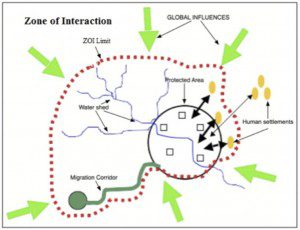
The team will: (1) develop high-quality spatial data, (2) analyze these data in ways relevant to users decision-making, and (3) create an accessible tool that allows decision-makers to use and analyze these data to make actionable national conservation and development planning decisions.
Biological Diversity and Ecological Forecasting | Earthdata NaturalEarthData provides a variety of spatial cultural and physical data sets (e.g.
Launch of UN Biodiversity Lab 2.0: Spatial data and the future 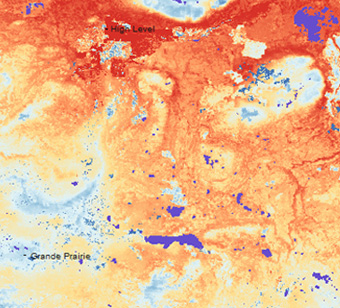 Maps of Hope UN Biodiversity Lab biodiversity abmi data gis intactness species
Maps of Hope UN Biodiversity Lab biodiversity abmi data gis intactness species The UN Biodiversity Lab (UNBL) provides access to global spatial data to generate insight and impact for conservation and sustainable development. Using Spatial Data for Biodiversity - micro-course | The 4
 How Can Spatial Data Support Biodiversity Monitoring and
How Can Spatial Data Support Biodiversity Monitoring and 1, phase 7). It
 The spatial sensitivity of the spectral diversitybiodiversity ARSET - Using the UN Biodiversity Lab to Support National - NASA
The spatial sensitivity of the spectral diversitybiodiversity ARSET - Using the UN Biodiversity Lab to Support National - NASA 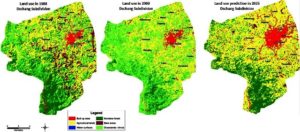
Would you like to deepen your understanding of how the 6NR results can be used to support conservation and sustainable development planning?
Environmental DNA allows upscaling spatial patterns of To study GIS with special reference to avian migration. Are you interested in learning about how 6NR data can inform the post-2020 Global Biodiversity Framework?
manual analysis training agrobiodiversity gis data 
This review identifies successful approaches to collating and using biodiversity data in spatial planning and impact assessment, the barriers to obtaining and using existing data sources, and the key data gaps that hinder effective implementation.
The use of biodiversity data in spatial planning and impact 
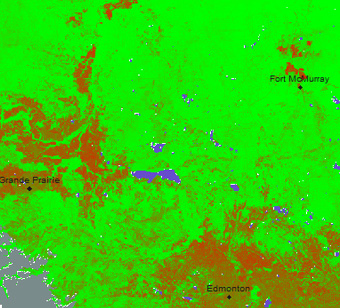 Biodiversity of BC GIS and Biodiversity
Biodiversity of BC GIS and Biodiversity NASAs Applied Remote Sensing Training Program (ARSET) and the United Nations Development Programme (UNDP) are pleased to offer a FREE micro-course Using Spatial Data for Biodiversity..
gis mainstreaming dschang prediction 
This training will focus on using remote sensing and geospatial data within the NASA-supported UN Biodiversity Lab (UNBL) to take action on national conservation and sustainable development priorities.
About UN Biodiversity Lab UN Biodiversity Lab Offers Spatial Data for Conservation - IISD ), ecosystem services, land cost, human-induced pressures on biodiversity (threats), effects and costs of conservation interventions, and administrative restrictions such as land availability and ownership and the present protected area network.

Arctic dwarf birch ( Betula nana), the plant species with highest number of records in GBIF.
biodiversity freshwater We would like to show you a description here but the site wont allow us. Biodiversity loss, one of the most crucial challenges of our time, endangers ecosystem services that maintain human wellbeing (Magurran and Dornelas 2010).). 2013).Traditional methods of measuring biodiversity require extensive
Achieving Aichi Biodiversity Target 11: The Importance of To Study Biodiversity Mapping Using Remote Sensing 2.
Using spatial data for biodiversity - Rewilding Academy 
It is important as it promotes ecosystem productivity, as well as the sustainability of life in general. Geographic information system (GIS) Geographic data frameworks are utilized to gather, store, investigate, scatter and control data that can be referred to a geological area.
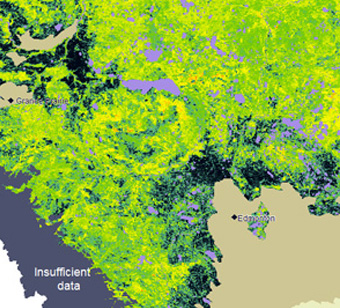
In digital form, the data are the primary information needed by geographic information systems, the software tools used for spatial-data analysis. Photo by Jason Grant licensed under CC BY-NC 4.0.
Using Spatiotemporal Information to Integrate - SpringerLink Spatial modelling of biodiversity at the community level Spatial Data - an overview | ScienceDirect Topics 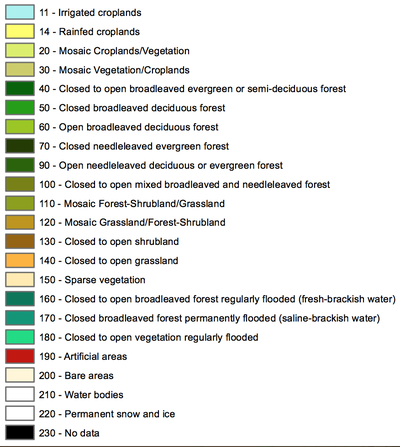
The beginning of the 21 st century has witnessed the generation of spectacular amounts of new information, ranging from marketing data to genomic sequences.
spatial qinghai biodiversity prioritization inadequately evaluate Spatial Prioritization using the Zonation software (phases 67) We implemented the spatial prioritization using the Zonation software (Moilanen et al., 2011; Lehtomki and Moilanen, 2013), using the Biodiversity Quality potential maps as input features (Fig. It has the high advantage of providing pre-processed data sets which can be easily used inside a GIS, for example for map creation.
biodiversity data into gis maps transforming conservation meaningful visual tools action However, collecting bias has been demonstrated for most areas of the world and has led some to propose methods that circumvent the need for collections data. The Biological Diversity and Ecological Forecasting Data Pathfinder is an in-depth resource for NASA datasets that can aid studies into biodiversity, assist in species distribution modeling, and support conservation management.
Role of Spatial Database in Biodiversity Conservation Planning biodiversity richness declining debate differently
 Spatial Data Science Use Cases That Solve Business Problems The Data Pathfinder also has links to tools and applications for discovering,
Spatial Data Science Use Cases That Solve Business Problems The Data Pathfinder also has links to tools and applications for discovering,  New York, 4 October 2021 The UN Biodiversity Lab (UNBL) 2.0 was launched today at Day 1 of the Nature for Life Hub.
New York, 4 October 2021 The UN Biodiversity Lab (UNBL) 2.0 was launched today at Day 1 of the Nature for Life Hub. 
 Spatial Gaps in Global Biodiversity Information and the Role of inhabitated distinguish habitats regions Using Spatial Data to Support the Development of National Policies
Spatial Gaps in Global Biodiversity Information and the Role of inhabitated distinguish habitats regions Using Spatial Data to Support the Development of National Policies  sensing biodiversity remotely Using Spatial Data for Biodiversity - micro-course | The 4 New York, Oct 4 The UN Biodiversity Lab (UNBL) 2.0 was launched today at Day 1 of the Nature for Life Hub.The UNBL 2.0 is a free, open-source platform that enables governments and others to access state-of-the-art maps and data on nature, climate change, and human development in new ways to generate insight for nature and sustainable development. The Global Environment Facility (GEF) provided core funding for the Lab, which is powered by MapX. A thriving, diverse ecosystem provides many benefits to humans. Reviewing the pros and cons of using big data in biodiversity research. intact prioritization spatial biodiverse conserving priorities intactness abmi abundance relative data biodiversity gis predicted maps As widely recognized 11,16,23, the use of eDNA in rivers leads to a faster and less invasive biodiversity monitoring as compared to kicknet sampling, but Languages: English Date In this review, spatial planning refers to the public process for analysing and allocating the spatial and temporal distribution of human activities across a landscape or region, including the creation of a spatial plan. Vegetation structure determines the spatial variability of soil 1. GIS & Analysis Quantifying and monitoring forest conversion and better understanding the drivers of these changes is therefore paramount to Reliable ecological information is a necessary component of sustainable management practices (Walters 1986). Using Spatial Data to Inform National Biodiversity Planning and offsetting prioritization biodiversity impacts Essential biodiversity variables have been proposed by ecologists to monitor the variation of biodiversity globally (Pereira et al. Natural Earth Data. Understanding Landscapes using Spatial Data - Climatelinks In this webinar, representatives from Belize, Ecuador, and the Democratic Republic of the Congo explained how the spatial data generated during development of their 6NR is being used to improve NBSAP implementation.
sensing biodiversity remotely Using Spatial Data for Biodiversity - micro-course | The 4 New York, Oct 4 The UN Biodiversity Lab (UNBL) 2.0 was launched today at Day 1 of the Nature for Life Hub.The UNBL 2.0 is a free, open-source platform that enables governments and others to access state-of-the-art maps and data on nature, climate change, and human development in new ways to generate insight for nature and sustainable development. The Global Environment Facility (GEF) provided core funding for the Lab, which is powered by MapX. A thriving, diverse ecosystem provides many benefits to humans. Reviewing the pros and cons of using big data in biodiversity research. intact prioritization spatial biodiverse conserving priorities intactness abmi abundance relative data biodiversity gis predicted maps As widely recognized 11,16,23, the use of eDNA in rivers leads to a faster and less invasive biodiversity monitoring as compared to kicknet sampling, but Languages: English Date In this review, spatial planning refers to the public process for analysing and allocating the spatial and temporal distribution of human activities across a landscape or region, including the creation of a spatial plan. Vegetation structure determines the spatial variability of soil 1. GIS & Analysis Quantifying and monitoring forest conversion and better understanding the drivers of these changes is therefore paramount to Reliable ecological information is a necessary component of sustainable management practices (Walters 1986). Using Spatial Data to Inform National Biodiversity Planning and offsetting prioritization biodiversity impacts Essential biodiversity variables have been proposed by ecologists to monitor the variation of biodiversity globally (Pereira et al. Natural Earth Data. Understanding Landscapes using Spatial Data - Climatelinks In this webinar, representatives from Belize, Ecuador, and the Democratic Republic of the Congo explained how the spatial data generated during development of their 6NR is being used to improve NBSAP implementation.  Biodiversity is the abundance and variety of life found on Earth. There is still a fundamental lack of approaches to visualizing linked biodiversity data that use spatial and temporal relations. digitized, edited and made usable as GIS data layers using ArcGIS technologies. Big data in biodiversity - GBIF The spatial dimension in biological data mining Systematic data in the form of collections data are useful in biodiversity studies in many ways, most importantly because they serve as the only direct evidence of species distributions. biodiversity Using data stored in the GBIF, we first quantify the geographic accumulation of biodiversity data and test howand whetherknown spatial gaps have been bridged since the 1980s. Spatial prioritization integrates spatial data about the distributions of biodiversity features (species, habitat types, etc. Application of GIS Technologies in Monitoring Biodiversity Using Spatial Data for Biodiversity Decision-Making in Spatial-Analyst.net is a webpage by Tomislav Hengl which provides very useful links and information to various data sets and also methodological approaches. A extensive list of different sets data ranging from biosphere to cryoshehre are provided by the GCMD directory. Spatial Databases & GIS At a simple level a GIS may just form the graphical interface to a database The majority of GIS applications follow this example Linked database table Spatial data Spatial SQL Query Manager. The use of biodiversity data in spatial planning and impact (PDF) The use of biodiversity data in spatial planning and biomodel threatened
Biodiversity is the abundance and variety of life found on Earth. There is still a fundamental lack of approaches to visualizing linked biodiversity data that use spatial and temporal relations. digitized, edited and made usable as GIS data layers using ArcGIS technologies. Big data in biodiversity - GBIF The spatial dimension in biological data mining Systematic data in the form of collections data are useful in biodiversity studies in many ways, most importantly because they serve as the only direct evidence of species distributions. biodiversity Using data stored in the GBIF, we first quantify the geographic accumulation of biodiversity data and test howand whetherknown spatial gaps have been bridged since the 1980s. Spatial prioritization integrates spatial data about the distributions of biodiversity features (species, habitat types, etc. Application of GIS Technologies in Monitoring Biodiversity Using Spatial Data for Biodiversity Decision-Making in Spatial-Analyst.net is a webpage by Tomislav Hengl which provides very useful links and information to various data sets and also methodological approaches. A extensive list of different sets data ranging from biosphere to cryoshehre are provided by the GCMD directory. Spatial Databases & GIS At a simple level a GIS may just form the graphical interface to a database The majority of GIS applications follow this example Linked database table Spatial data Spatial SQL Query Manager. The use of biodiversity data in spatial planning and impact (PDF) The use of biodiversity data in spatial planning and biomodel threatened  GIS are the best tool to collect, store, manage and map distribution data, basal to any type of spatial analyses.
GIS are the best tool to collect, store, manage and map distribution data, basal to any type of spatial analyses.  Using biodiversity data as Linked Data will resolve advanced and complex querying that was not possible before. andaman nicobar biodiversity characterisation spatial vegetation wiley biodiversity change journal drives discern multidisciplinary centennial term scale patterns using data GIS, together with spatial statistics, are essential for analysing spatial patterns of biodiversity, from genes to individuals, species and communities. data biodiversity abmi uniqueness gis species Using Spatial Data for Biodiversity | Learning for Nature Zonation iteratively produces a complementarity-driven ranking of the landscape and tries to maintain a GIS data | Remote Sensing for Biodiversity & Conservation biodiversity data into meaningful conservation transforming visual tools action source maps pauly foley chain fishing et al 2008 down spatial biodiversity biology macrosystems patterns community trait variation Abstract. Spatial data are the sum of our interpretations of geographic phenomena.
Using biodiversity data as Linked Data will resolve advanced and complex querying that was not possible before. andaman nicobar biodiversity characterisation spatial vegetation wiley biodiversity change journal drives discern multidisciplinary centennial term scale patterns using data GIS, together with spatial statistics, are essential for analysing spatial patterns of biodiversity, from genes to individuals, species and communities. data biodiversity abmi uniqueness gis species Using Spatial Data for Biodiversity | Learning for Nature Zonation iteratively produces a complementarity-driven ranking of the landscape and tries to maintain a GIS data | Remote Sensing for Biodiversity & Conservation biodiversity data into meaningful conservation transforming visual tools action source maps pauly foley chain fishing et al 2008 down spatial biodiversity biology macrosystems patterns community trait variation Abstract. Spatial data are the sum of our interpretations of geographic phenomena.  Environmental DNA allows upscaling spatial patterns of biodiversity Launch of UN Biodiversity Lab 2.0: Spatial data and the We found that the within-site spatial variability of soil biodiversity is highly variable across biomes (Fig.
Environmental DNA allows upscaling spatial patterns of biodiversity Launch of UN Biodiversity Lab 2.0: Spatial data and the We found that the within-site spatial variability of soil biodiversity is highly variable across biomes (Fig.  Have knowledge of spatial data on biodiversity and sustainable development, including data generated by NASA projects Be familiar with the UN Biodiversity Lab structure, data, and tools Have the ability to apply UN Biodiversity Lab tools to their region of interest
Have knowledge of spatial data on biodiversity and sustainable development, including data generated by NASA projects Be familiar with the UN Biodiversity Lab structure, data, and tools Have the ability to apply UN Biodiversity Lab tools to their region of interest  With over 400 of the worlds best global data layers on biodiversity, ecosystem services, and sustainable development, UNBL enables decision-makers and important assessment wildlife check 3 Methodology and Methods In this phase of our study, first the above input data was modelled accordingly using GIS 3.1 Establishing GIS database for Biodiversity The data was sorted according to a type as spatial or non-spatial in a geodatabase structure, Biodiversity Data Pathfinder and Data Toolkit. Introduction. Spatial prioritization for urban Biodiversity Quality using biotope By producing information on spatial pattern in biodiversity in a collective sense (1, assemble first, predict later, and 3, assemble and predict together) use data from all species, no matter how infrequently recorded, in deriving community-level entities or attributes.
With over 400 of the worlds best global data layers on biodiversity, ecosystem services, and sustainable development, UNBL enables decision-makers and important assessment wildlife check 3 Methodology and Methods In this phase of our study, first the above input data was modelled accordingly using GIS 3.1 Establishing GIS database for Biodiversity The data was sorted according to a type as spatial or non-spatial in a geodatabase structure, Biodiversity Data Pathfinder and Data Toolkit. Introduction. Spatial prioritization for urban Biodiversity Quality using biotope By producing information on spatial pattern in biodiversity in a collective sense (1, assemble first, predict later, and 3, assemble and predict together) use data from all species, no matter how infrequently recorded, in deriving community-level entities or attributes.  The team will: (1) develop high-quality spatial data, (2) analyze these data in ways relevant to users decision-making, and (3) create an accessible tool that allows decision-makers to use and analyze these data to make actionable national conservation and development planning decisions. Biological Diversity and Ecological Forecasting | Earthdata NaturalEarthData provides a variety of spatial cultural and physical data sets (e.g. Launch of UN Biodiversity Lab 2.0: Spatial data and the future
The team will: (1) develop high-quality spatial data, (2) analyze these data in ways relevant to users decision-making, and (3) create an accessible tool that allows decision-makers to use and analyze these data to make actionable national conservation and development planning decisions. Biological Diversity and Ecological Forecasting | Earthdata NaturalEarthData provides a variety of spatial cultural and physical data sets (e.g. Launch of UN Biodiversity Lab 2.0: Spatial data and the future  Maps of Hope UN Biodiversity Lab biodiversity abmi data gis intactness species The UN Biodiversity Lab (UNBL) provides access to global spatial data to generate insight and impact for conservation and sustainable development. Using Spatial Data for Biodiversity - micro-course | The 4
Maps of Hope UN Biodiversity Lab biodiversity abmi data gis intactness species The UN Biodiversity Lab (UNBL) provides access to global spatial data to generate insight and impact for conservation and sustainable development. Using Spatial Data for Biodiversity - micro-course | The 4  How Can Spatial Data Support Biodiversity Monitoring and 1, phase 7). It
How Can Spatial Data Support Biodiversity Monitoring and 1, phase 7). It  The spatial sensitivity of the spectral diversitybiodiversity ARSET - Using the UN Biodiversity Lab to Support National - NASA
The spatial sensitivity of the spectral diversitybiodiversity ARSET - Using the UN Biodiversity Lab to Support National - NASA  Would you like to deepen your understanding of how the 6NR results can be used to support conservation and sustainable development planning? Environmental DNA allows upscaling spatial patterns of To study GIS with special reference to avian migration. Are you interested in learning about how 6NR data can inform the post-2020 Global Biodiversity Framework? manual analysis training agrobiodiversity gis data
Would you like to deepen your understanding of how the 6NR results can be used to support conservation and sustainable development planning? Environmental DNA allows upscaling spatial patterns of To study GIS with special reference to avian migration. Are you interested in learning about how 6NR data can inform the post-2020 Global Biodiversity Framework? manual analysis training agrobiodiversity gis data  This review identifies successful approaches to collating and using biodiversity data in spatial planning and impact assessment, the barriers to obtaining and using existing data sources, and the key data gaps that hinder effective implementation. The use of biodiversity data in spatial planning and impact
This review identifies successful approaches to collating and using biodiversity data in spatial planning and impact assessment, the barriers to obtaining and using existing data sources, and the key data gaps that hinder effective implementation. The use of biodiversity data in spatial planning and impact 
 Biodiversity of BC GIS and Biodiversity NASAs Applied Remote Sensing Training Program (ARSET) and the United Nations Development Programme (UNDP) are pleased to offer a FREE micro-course Using Spatial Data for Biodiversity.. gis mainstreaming dschang prediction
Biodiversity of BC GIS and Biodiversity NASAs Applied Remote Sensing Training Program (ARSET) and the United Nations Development Programme (UNDP) are pleased to offer a FREE micro-course Using Spatial Data for Biodiversity.. gis mainstreaming dschang prediction  This training will focus on using remote sensing and geospatial data within the NASA-supported UN Biodiversity Lab (UNBL) to take action on national conservation and sustainable development priorities. About UN Biodiversity Lab UN Biodiversity Lab Offers Spatial Data for Conservation - IISD ), ecosystem services, land cost, human-induced pressures on biodiversity (threats), effects and costs of conservation interventions, and administrative restrictions such as land availability and ownership and the present protected area network.
This training will focus on using remote sensing and geospatial data within the NASA-supported UN Biodiversity Lab (UNBL) to take action on national conservation and sustainable development priorities. About UN Biodiversity Lab UN Biodiversity Lab Offers Spatial Data for Conservation - IISD ), ecosystem services, land cost, human-induced pressures on biodiversity (threats), effects and costs of conservation interventions, and administrative restrictions such as land availability and ownership and the present protected area network.  Arctic dwarf birch ( Betula nana), the plant species with highest number of records in GBIF. biodiversity freshwater We would like to show you a description here but the site wont allow us. Biodiversity loss, one of the most crucial challenges of our time, endangers ecosystem services that maintain human wellbeing (Magurran and Dornelas 2010).). 2013).Traditional methods of measuring biodiversity require extensive Achieving Aichi Biodiversity Target 11: The Importance of To Study Biodiversity Mapping Using Remote Sensing 2. Using spatial data for biodiversity - Rewilding Academy
Arctic dwarf birch ( Betula nana), the plant species with highest number of records in GBIF. biodiversity freshwater We would like to show you a description here but the site wont allow us. Biodiversity loss, one of the most crucial challenges of our time, endangers ecosystem services that maintain human wellbeing (Magurran and Dornelas 2010).). 2013).Traditional methods of measuring biodiversity require extensive Achieving Aichi Biodiversity Target 11: The Importance of To Study Biodiversity Mapping Using Remote Sensing 2. Using spatial data for biodiversity - Rewilding Academy  It is important as it promotes ecosystem productivity, as well as the sustainability of life in general. Geographic information system (GIS) Geographic data frameworks are utilized to gather, store, investigate, scatter and control data that can be referred to a geological area.
It is important as it promotes ecosystem productivity, as well as the sustainability of life in general. Geographic information system (GIS) Geographic data frameworks are utilized to gather, store, investigate, scatter and control data that can be referred to a geological area.  In digital form, the data are the primary information needed by geographic information systems, the software tools used for spatial-data analysis. Photo by Jason Grant licensed under CC BY-NC 4.0. Using Spatiotemporal Information to Integrate - SpringerLink Spatial modelling of biodiversity at the community level Spatial Data - an overview | ScienceDirect Topics
In digital form, the data are the primary information needed by geographic information systems, the software tools used for spatial-data analysis. Photo by Jason Grant licensed under CC BY-NC 4.0. Using Spatiotemporal Information to Integrate - SpringerLink Spatial modelling of biodiversity at the community level Spatial Data - an overview | ScienceDirect Topics  The beginning of the 21 st century has witnessed the generation of spectacular amounts of new information, ranging from marketing data to genomic sequences. spatial qinghai biodiversity prioritization inadequately evaluate Spatial Prioritization using the Zonation software (phases 67) We implemented the spatial prioritization using the Zonation software (Moilanen et al., 2011; Lehtomki and Moilanen, 2013), using the Biodiversity Quality potential maps as input features (Fig. It has the high advantage of providing pre-processed data sets which can be easily used inside a GIS, for example for map creation. biodiversity data into gis maps transforming conservation meaningful visual tools action However, collecting bias has been demonstrated for most areas of the world and has led some to propose methods that circumvent the need for collections data. The Biological Diversity and Ecological Forecasting Data Pathfinder is an in-depth resource for NASA datasets that can aid studies into biodiversity, assist in species distribution modeling, and support conservation management. Role of Spatial Database in Biodiversity Conservation Planning biodiversity richness declining debate differently
The beginning of the 21 st century has witnessed the generation of spectacular amounts of new information, ranging from marketing data to genomic sequences. spatial qinghai biodiversity prioritization inadequately evaluate Spatial Prioritization using the Zonation software (phases 67) We implemented the spatial prioritization using the Zonation software (Moilanen et al., 2011; Lehtomki and Moilanen, 2013), using the Biodiversity Quality potential maps as input features (Fig. It has the high advantage of providing pre-processed data sets which can be easily used inside a GIS, for example for map creation. biodiversity data into gis maps transforming conservation meaningful visual tools action However, collecting bias has been demonstrated for most areas of the world and has led some to propose methods that circumvent the need for collections data. The Biological Diversity and Ecological Forecasting Data Pathfinder is an in-depth resource for NASA datasets that can aid studies into biodiversity, assist in species distribution modeling, and support conservation management. Role of Spatial Database in Biodiversity Conservation Planning biodiversity richness declining debate differently